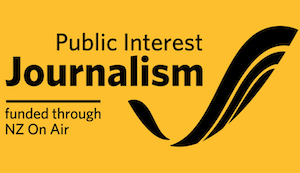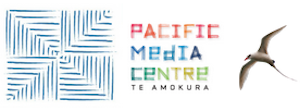By Kaupapa Māori reporter Matai O’Connor of The Gisborne Herald
Tairāwhiti tā moko artists Maia Gibbs and Henare Brooking designed the jersey the Warriors wore in their Indigenous Round National Rugby League match against Newcastle Knights last Saturday.
The jersey, called Te Amokura, is a powerful expression of connection, unity and identity developed in partnership with Puma and Gisborne’s Toi Ake Maori art gallery.
Maia Gibbs (Ngāi Tāmanuhiri, Rongowhakaata, Ngāti Kahungungu) and Henare Brooking (Ngāti Porou, Rongowhakaata, Te Whānau-ā-Apanui, Ngāti Kahungunu, Ngāti Tūwharetoa) run the gallery located in Ballance Street Village.

It was set up about two years ago following the first covid-19 lockdown.
Gibbs said the jersey needed to “encompass what the club and team represent”.
“We are the paintbrushes and pencils that put it together but the players are the ones that live their lives under a microscope. This is about them and what they want to represent.
“It’s pretty cool to see our tohu holding its own,” he said.
Powerful expression
“I’m humbled to have had the opportunity to work on this project and see it come to life — even more so to do it along side taku tuakana Henare Brooking.
“To have the support of our iwi, hapū and whānau throughout is really special and we thank you all,” he said.
Te Amokura is a powerful expression of the Warriors’ connection, unity and identity. It takes its inspiration from the manu (bird) of the same name, known across the Pacific, Australia and Aotearoa.
The amokura helped the great navigators of the Pacific chart the largest body of water in the world.
It is known for its two distinct red elongated tail feathers which were highly prized by foremost warriors and chiefs throughout Te moana nui a Kiwa.
These are represented by two red strips on the back of the jersey.
The colours represent significant elements of the club’s identity but also the journey over the last three seasons, and the sacrifices made by players and staff to base themselves away from home, their families and their fans.
The collective whakapapa
Blue represents mana moana — the ocean — that connects Aotearoa, Australia and the Pacific, carrying the collective whakapapa.
Green represents mana whenua — the land — Aotearoa acknowledging the Warriors’ true home and importantly Australia’s mana whenua, the Aboriginal whanaunga and the original people of Australia who hosted the team over the last three seasons.
Red represents mana tāngata — the people — connecting players past, present and future, and interweaving the whakapapa of each individual as they move into the field of battle.
The black represents Te Pō — a place of development and learning — while the white is Te Ao — a place of expression and action.
The jersey is like a korowai (cloak) that adorns the wearer, not just as a jersey but as a representation of their own journey.
It is a celebration of the Warriors’ cultural identity and a representation of the connection they share as indigenous people across the world.
This year’s NRL Indigenous Round focused on creating a space for learning and educating Australians about Indigenous culture as well as encouraging the rugby league community to take three key actions to be part of the change — learn the land; learn the history; support an Indigenous business.

Note: Te Amokura is also the Te Reo Māori name of the Pacific Media Centre, which launched this website Asia Pacific Report in 2016. Asia Pacific Report is now published independently in association with Evening Report and Pacific Journalism Review.
Republished with permission by The Gisborne Herald and NZ On Air.
This content originally appeared on Asia Pacific Report and was authored by APR editor.
APR editor | Radio Free (2022-06-02T19:06:57+00:00) Te Amokura – Tairāwhiti artists behind Warriors indigenous jersey. Retrieved from https://www.radiofree.org/2022/06/02/te-amokura-tairawhiti-artists-behind-warriors-indigenous-jersey/
Please log in to upload a file.
There are no updates yet.
Click the Upload button above to add an update.